 You’ve probably heard the story. The one where your husband gives up chocolate for a week and drops ten pounds. While you eat a single piece of candy and gain two.
So it’s not just age that’s to blame.
No matter how hard we try to shift the unwanted pounds, menopause has its own plans. One where every calorie we eat goes straight to our hips.
Having to accept a new body you didn’t ask for is hard. But when we try everything and nothing works, it can feel like the only option.
But when we understand the who, what, where and why we are one step closer to being comfortable in our own skin again.
Menopausal weight gain is no myth. But we can still bust it. Discover why your body is holding onto the pounds. And how to drop off the excess baggage.
You’ve probably heard the story. The one where your husband gives up chocolate for a week and drops ten pounds. While you eat a single piece of candy and gain two.
So it’s not just age that’s to blame.
No matter how hard we try to shift the unwanted pounds, menopause has its own plans. One where every calorie we eat goes straight to our hips.
Having to accept a new body you didn’t ask for is hard. But when we try everything and nothing works, it can feel like the only option.
But when we understand the who, what, where and why we are one step closer to being comfortable in our own skin again.
Menopausal weight gain is no myth. But we can still bust it. Discover why your body is holding onto the pounds. And how to drop off the excess baggage.
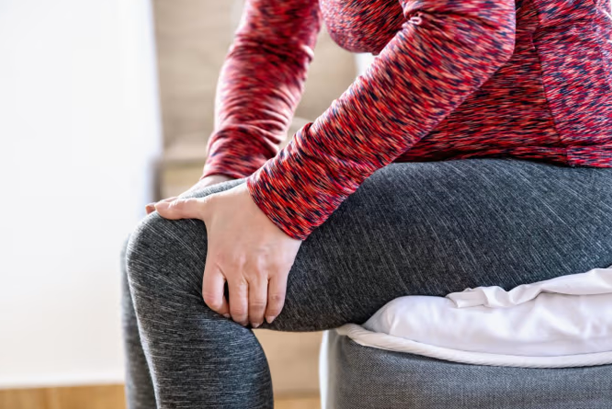
Welcome to menopause. Where everyone talks about hot flashes, but not much about anything else.
And the reality is, 50% of women suffer with joint pain during menopause.
Losing mobility in your joints can feel like a nightmare. And being pain-free may feel like a distant dream. But it’s time to put the fear to bed.
While it may be common, it doesn’t mean you have to put up with it. Let’s dive deep into the bothersome bones of it all by learning about menopausal arthralgia. And discover the best way to say a strong farewell to stiff joints.
Throughout the menopause, estrogen levels decline. When this happens, things don’t run as smoothly as they once did. Estrogen is an extremely important hormone. In fact, its essential for keeping our bones healthy.
It helps us in more ways than we realize. It has anti-inflammatory properties to keep inflammation at bay. Keeping the ligaments and tendons free of stiffness.
It helps surround the joints with synovial fluid. Fluid that cushions and lubricates the joints for healthy movement.
It plays an important role in maintaining bone density. Without adequate bone density, the body is prone to osteoporosis and joint pain. So with all that estrogen does for us, it makes sense how low levels can be highly problematic.
When estrogen decreases during menopause, the joints are vulnerable. Inflammation can take over leaving us stiff. Lack of lubrication around the joints can make us lose mobility. And with less bone density, we are more fragile and susceptible to aches and pains.
Other pain conditions should be ruled out first, such as arthritis. But the joint pain caused by estrogen decline in menopause has its own name. It's called menopausal arthralgia. And with 50% of menopausal women experiencing it, it is more common that you may have first realized.
The main symptoms of menopausal arthralgia to look out for are:
These are the symptoms of menopausal arthralgia itself. But the chronic pain it causes can in fact lead to many secondary symptoms. This includes fatigue, low energy and depression. Which is no surprise when pain can disrupt everyday life in a significant way.
There are ways that a doctor can help with menopausal arthralgia. The main one being Hormone Replacement Therapy (HRT). It works by replacing lost estrogen levels in the body. Thus can help reduce the symptoms of menopausal arthralgia.
But like with most medical interventions, it comes with a risk. That is why it is so important to discuss benefits and risks with a doctor. HRT may work wonders for some women but its not everyone. It's always essential to find out what works for you and your body.
It’s not the only option to help manage joint pain from menopause. So if HRT is not for you, there are lots of lifestyle factors that can help keep the pain at bay.
Diet:
Avoiding foods high in sugar, refined carbohydrates and unhealthy fats can reduce inflammation. You can replace them with a diet rich in anti-inflammatory foods. Such as fruits, vegetables, whole grains, lean proteins and healthy fats. They can help reduce inflammation and help keep joints pain-free.
Exercise:
Chronic inflammation can contribute to joint pain. Low impact exercises can be a dream such as swimming, walking and Pilates. Exercise can help reduce inflammation and can also help ease joint pain.
Weight loss:
Excess weight can exacerbate joint pain. In particular, it can be problematic in weight-bearing joints like the hips and knees. Additionally, losing weight can also improve general joint function and mobility.
Reducing stress:
Chronic stress can lead to elevated levels of cortisol. Cortisol is the primary stress hormone in the body. High cortisol levels have been associated with increased inflammation and pain sensitivity. This can exacerbate joint pain.
So its important to show yourself some self-love. Engaging in stress-reducing activities that can help lower cortisol levels. It could be meditation, deep breathing exercises, or yoga. They can all help lower cortisol levels. In turn, reducing inflammation and alleviating joint pain.
It's great to know you don’t have to put up with the pain of menopausal arthralgia.
It is all well and good saying "exercise" or "lose weight". But if you are in too much pain to move around, that advice may feel frustrating. It can feel like you are stuck in a vicious cycle of needing to move but being in too much pain to do so. But the good news is, iit is a cycle you can break out of.
CellaBeauty is here to assist you. Helping you get back on the path to a pain-free menopause. Pain Relief can help you conquer the worst of the pain symptoms to help get you moving again. And InnerGlow can help you tackle stubborn weight gain and fatigue.
Helping relieve you of painful joints. Helping you make successful lifestyle changes. And getting you back to a healthier, happier you.
Knowing all about menopausal arthralgia is key for relief from its pain. Knowledge is power after all. Pain is horrible for everyone. But thankfully, with these steps you can help regain control of your life. And feel more like yourself again.
Whether this be by the help of a medical professional. Or you choose to make lifestyle changes with the help of CellaBeauty. You will be on the path to say goodbye to those stiff hips and knees for good. And back to the daily activities you enjoy once more.
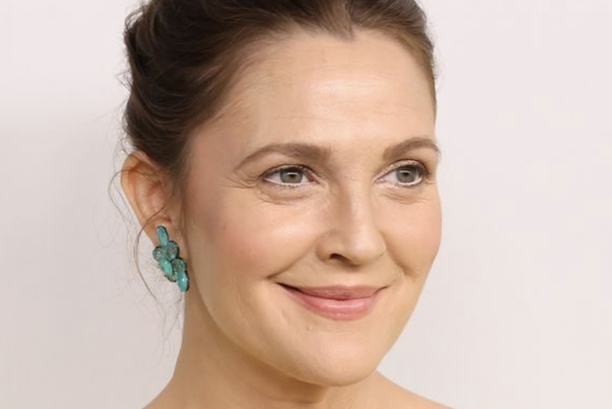
Menopause symptoms can be a pain in the... joints. Joint pain impacts up to 50% of women during menopause. But all we seem to hear about is the hot flashes and sticky bed sheets.
But don't let menopausal joint pain make you feel unhinged. It’s time to delve into the bones of it all. All by finding out about menopausal arthralgia. And how we can take back control.
There are several common symptoms associated with menopausal arthralgia:
And it is no shock that chronic pain from menopausal arthralgia can cause its own symptoms. Being in constant pain can be extremely distressing and disruptive to daily life. And with it, comes its own set of challenges. From fatigue and poor sleep, to low mood and depression.
It’s no secret that hormones go haywire when menopause strikes. This can have a massive impact on the functions in the body. Responsible for many of the nasty symptoms that can plague us during menopause.
But when it comes to menopausal arthralgia, there’s one hormone to blame. Estrogen.
During menopause, estrogen levels decrease. Estrogen plays a vital role for keeping our joints healthy. So without enough of it, it can cause achy and painful joints.
Estrogen is known for its anti-inflammatory properties. It reduces stiffness in ligaments and tendons. Helping us keep moving and reduce injuries.
Estrogen helps maintain joint lubrication. It does so by stimulating the production of synovial fluid. This cushions and lubricates the joints. Estrogen plays a crucial role in maintaining bone density which in turn, slows down bone loss. It helps prevent osteoporosis and joint discomfort.
But during menopause estrogen levels drop. This leaves us vulnerable to inflammation and sore joints. And leads us to what is known as menopausal arthralgia.
It can be comforting to know there are ways to help manage the pain and discomfort menopause can cause. From the doctor's office to your own home. There are ways to help you beat the worst of menopausal arthralgia.
As we know, estrogen drops during menopause. And in turn, is the primary cause of achy and painful joints. HRT replaces declining estrogen levels. This can help reduce joint inflammation and reduce joint pain.
But it comes with its own set of risks. Long-term use of HRT has its own side effects. Including increased risk of breast cancer, cardiovascular disease and blood clots. That is why it is so important to discuss your options with a medical professional before trying HRT.
Thankfully, HRT is not the be all and end all. There are things we can try ourselves in our own lifestyles. Changes that can be made to battle back against the bothersome bones.
Foods high in sugar, refined carbohydrates, and unhealthy fats can contribute to inflammation. Which is a huge no-no for joint pain. To reduce it, you can follow an anti-inflammatory diet. Food that can help are fruits, vegetables, whole grains, lean proteins, and healthy fat. These can help reduce inflammation and help manage menopausal arthralgia.
You can also include soy-based products in your diet. They contain phytoestrogens. These plant compounds mimic estrogen in the body. This may help balance hormones and reduce aches and pains.
Excess weight can make joint pain worse. In particular, the weight-bearing joints like the knees and hips. So by losing weight, it can help ease stress on the joints and reduce pain. Additionally, weight loss can also improve overall joint function and mobility. Making moving around a whole lot easier.
Stress can influence how the brain processes pain signals. It means we can become more sensitive to pain. So when we reduce stress levels, our perception of pain decreases. In turn, helping us feel less pain than before.
Not only this as chronic stress can lead to elevated levels of cortisol. Cortisol is the primary stress hormone in the body. High cortisol levels can cause increased inflammation. This can make problematic pain in the joints worse.
It can be helpful to incorporate stress-reducing activities into your lifestyle. Activities such as meditation, deep breathing or yoga can help lower cortisol levels. All which help reduce inflammation and help you manage menopausal joint pain.
It probably sounds counterintuitive exercising when your joints are on fire. But exercise has been shown to reduce inflammation in the body. And as we know, inflammation is the enemy of joint pain. So reducing it with exercise can be great pain relief.
In summary, exercise is great for general well-being and keeping us healthy. And the endorphins it gives us can help our mood. Which is super important when you feel down in the dumps with menopausal arthralgia.
It can feel like a colossal challenge to move your body when joint pain strikes. While exercise may be great advice, it doesn’t feel like that when we can barely get out of bed. Sitting hurts and moving hurts. And sure, losing weight is fantastic for taking some of the load off our joints. But it's significantly harder to do so when you’re in too much pain to move. Menopausal arthralgia can be quite the vicious cycle.
To help you on your journey, CellaBeauty is here. It’s time to regain control. Pain Relief by CellaBeauty can help you tackle the worst of menopausal arthralgia.
InnerGlow by CellaBeauty can help you restore hormonal balance. Helping you shift those unwanted pounds. Taking weight off the scale... and your joints. Making it easier to put in place lifestyle changes that can provide relief to the aches and pains.
Chronic physical pain from menopausal arthralgia can be chronic emotional pain for us. Preventing us from doing the activities we enjoy and doing the things we love. We can end up as unhappy and miserable as our joints.
But thankfully, there are ways to relieve it. By speaking to a medical professional or making lifestyle changes with CellaBeauty. You can feel comfortable in your own skin, and bones again.
Take care of yourself today and know you are not alone. There are ways to take a stand against menopausal arthralgia.
 It’s something nobody is talking about but everyone should be. Your estrobolome.
When it comes to the symptoms of menopause, hormones are often painted as the villains. And while they may seem like the arch enemy of menopause, that’s only one side of the story.
It's time for your dramatic menopause symptoms to stop stealing the show. By learning all about the main character, the estrobolome.
It’s something nobody is talking about but everyone should be. Your estrobolome.
When it comes to the symptoms of menopause, hormones are often painted as the villains. And while they may seem like the arch enemy of menopause, that’s only one side of the story.
It's time for your dramatic menopause symptoms to stop stealing the show. By learning all about the main character, the estrobolome.
 When you wake up sleep deprived and stuck to your bedsheets at 3am, nobody wants to hear the words "try yoga". Or "eat healthy".
What we really want to know is how we can actually get a decent night's sleep. Maybe a dash of energy. And get rid of the extra few pounds we're having to slog around since the menopause hit us like a tonne of bricks.
Menopause may be a part of human nature. But let's face it. It's no walk in the park.
It's a very hot, sweaty and what seems to be, a never-ending hike.
And while it may feel like the only option is to put up with it, there is another way. It's all about tackling the troubling symptoms of menopause at the source.
And no, you don't have to eat salads or head to that yoga retreat.
When you wake up sleep deprived and stuck to your bedsheets at 3am, nobody wants to hear the words "try yoga". Or "eat healthy".
What we really want to know is how we can actually get a decent night's sleep. Maybe a dash of energy. And get rid of the extra few pounds we're having to slog around since the menopause hit us like a tonne of bricks.
Menopause may be a part of human nature. But let's face it. It's no walk in the park.
It's a very hot, sweaty and what seems to be, a never-ending hike.
And while it may feel like the only option is to put up with it, there is another way. It's all about tackling the troubling symptoms of menopause at the source.
And no, you don't have to eat salads or head to that yoga retreat.
 It is hard to define what sensitive skin type really is as it means different things for different people. Generally, people with a sensitive skin type experience burning and stinging sensations due to the oversensitivity of their skin. This usually happens when the skin comes in contact with ingredients in skincare and makeup products.
On the other hand, some people with extremely sensitive skin also experience skin burning after exposure to the sun, hot temperatures, and sweat. At times, skin sensitivity can also be a result of underlying conditions like rosacea, eczema, psoriasis, etc. Other times, some allergic reactions can also be the reason behind skin sensitivity.
It is important to manage sensitive skin mindfully so as not to worsen the condition even further.
The Best Ingredients for Sensitive Skin
People with sensitive skin are usually afraid of trying out new products on their skin as it is hard to predict the consequences. If you are someone with sensitive skin who struggles with getting your hands on the right skincare products, here are some ingredients to look for:
Green Tea Extract
People with sensitive skin often suffer from irritation and burning. Soothing ingredients like green tea extract can therefore help with this issue. It is an excellent antioxidant that is helpful for slowing down skin aging. Green tea extract also maintains healthy moisture levels and calms inflammation.
Glycerin
Glycerin is a humectant that is great for attracting and holding hydration. The ingredient is especially useful for hydrating the skin and maintaining moisture. Glycerin is a safe ingredient that does not irritate the skin.
Aloe Vera
Aloe vera has amazing soothing properties that can calm inflammation and help deal with skin redness and irritation. Having aloe vera in a skincare product will not burn or sting after using the product.
Prevents Pigmentation
Another issue that some people face is the discoloration of skin and pigmentation. This usually occurs at an older age. But with the help of hyaluronic acid, you can prevent age spots. It ensures that your skin stays youthful and radiant as it used to.
The Best Active Ingredients for Sensitive Skin Type
Active ingredients in a product are the components that are added to treat specific skin concerns. Here are some that suit people with sensitive skin.
Hyaluronic Acid
Hyaluronic acid is a polysaccharide that naturally exists in our hair and skin. A common active ingredient today, it is quite gentle on the skin and does not cause irritation or other adverse effects. It is also a humectant, meaning it can deeply moisturize your skin for a radiant, glowy look.
Vitamin E
Vitamin E is another antioxidant that is especially suitable for sensitive skin types as it has calming and soothing effects on the skin. Like Hyaluronic Acid, Vitamin E (sometimes labeled as tocopherol or alpha-tocopherol) is also a naturally occurring ingredient.
Besides being extremely hydrating and soothing on the skin, vitamin E can also strengthen and rebuild the skin barrier. You can also use this ingredient for wound healing.
Ceramides
Ceramides are also naturally-occurring ingredients that are present along the protective barrier of the skin. You may feel irritation and severe skin sensitivity when the barrier gets damaged. In such cases, skincare products containing ceramides can repair the outer layers of skin. This ingredient is best for improving moisture, restoring skin barriers, and reducing signs of skin aging.
Sources:
https://www.webmd.com/beauty/features/skin-care-ingredients-sensitive-skin
https://www.skinvirtue.com/articles/6-of-the-best-ingredients-for-sensitive-skin
https://www.byrdie.com/skincare-cocktailing-4683971
It is hard to define what sensitive skin type really is as it means different things for different people. Generally, people with a sensitive skin type experience burning and stinging sensations due to the oversensitivity of their skin. This usually happens when the skin comes in contact with ingredients in skincare and makeup products.
On the other hand, some people with extremely sensitive skin also experience skin burning after exposure to the sun, hot temperatures, and sweat. At times, skin sensitivity can also be a result of underlying conditions like rosacea, eczema, psoriasis, etc. Other times, some allergic reactions can also be the reason behind skin sensitivity.
It is important to manage sensitive skin mindfully so as not to worsen the condition even further.
The Best Ingredients for Sensitive Skin
People with sensitive skin are usually afraid of trying out new products on their skin as it is hard to predict the consequences. If you are someone with sensitive skin who struggles with getting your hands on the right skincare products, here are some ingredients to look for:
Green Tea Extract
People with sensitive skin often suffer from irritation and burning. Soothing ingredients like green tea extract can therefore help with this issue. It is an excellent antioxidant that is helpful for slowing down skin aging. Green tea extract also maintains healthy moisture levels and calms inflammation.
Glycerin
Glycerin is a humectant that is great for attracting and holding hydration. The ingredient is especially useful for hydrating the skin and maintaining moisture. Glycerin is a safe ingredient that does not irritate the skin.
Aloe Vera
Aloe vera has amazing soothing properties that can calm inflammation and help deal with skin redness and irritation. Having aloe vera in a skincare product will not burn or sting after using the product.
Prevents Pigmentation
Another issue that some people face is the discoloration of skin and pigmentation. This usually occurs at an older age. But with the help of hyaluronic acid, you can prevent age spots. It ensures that your skin stays youthful and radiant as it used to.
The Best Active Ingredients for Sensitive Skin Type
Active ingredients in a product are the components that are added to treat specific skin concerns. Here are some that suit people with sensitive skin.
Hyaluronic Acid
Hyaluronic acid is a polysaccharide that naturally exists in our hair and skin. A common active ingredient today, it is quite gentle on the skin and does not cause irritation or other adverse effects. It is also a humectant, meaning it can deeply moisturize your skin for a radiant, glowy look.
Vitamin E
Vitamin E is another antioxidant that is especially suitable for sensitive skin types as it has calming and soothing effects on the skin. Like Hyaluronic Acid, Vitamin E (sometimes labeled as tocopherol or alpha-tocopherol) is also a naturally occurring ingredient.
Besides being extremely hydrating and soothing on the skin, vitamin E can also strengthen and rebuild the skin barrier. You can also use this ingredient for wound healing.
Ceramides
Ceramides are also naturally-occurring ingredients that are present along the protective barrier of the skin. You may feel irritation and severe skin sensitivity when the barrier gets damaged. In such cases, skincare products containing ceramides can repair the outer layers of skin. This ingredient is best for improving moisture, restoring skin barriers, and reducing signs of skin aging.
Sources:
https://www.webmd.com/beauty/features/skin-care-ingredients-sensitive-skin
https://www.skinvirtue.com/articles/6-of-the-best-ingredients-for-sensitive-skin
https://www.byrdie.com/skincare-cocktailing-4683971
Related Articles
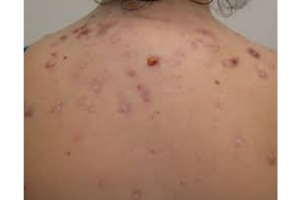
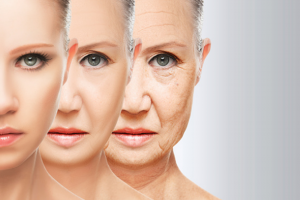








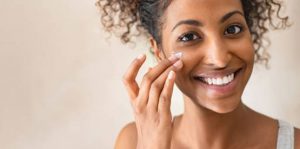




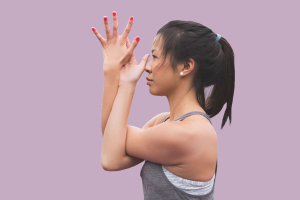


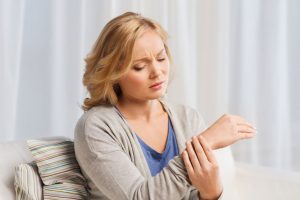
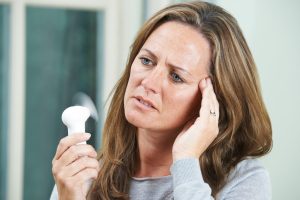
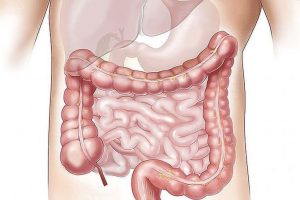
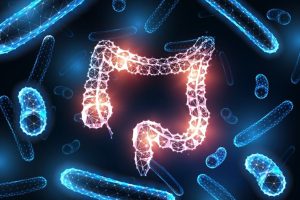
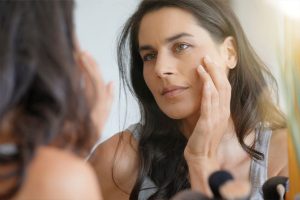
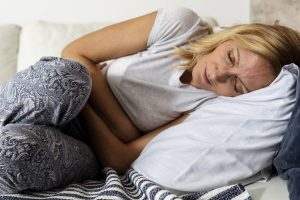
About
* These statements have not been evaluated by the Food and Drug Administration. This product is not intended to diagnose, treat, cure or prevent any disease.